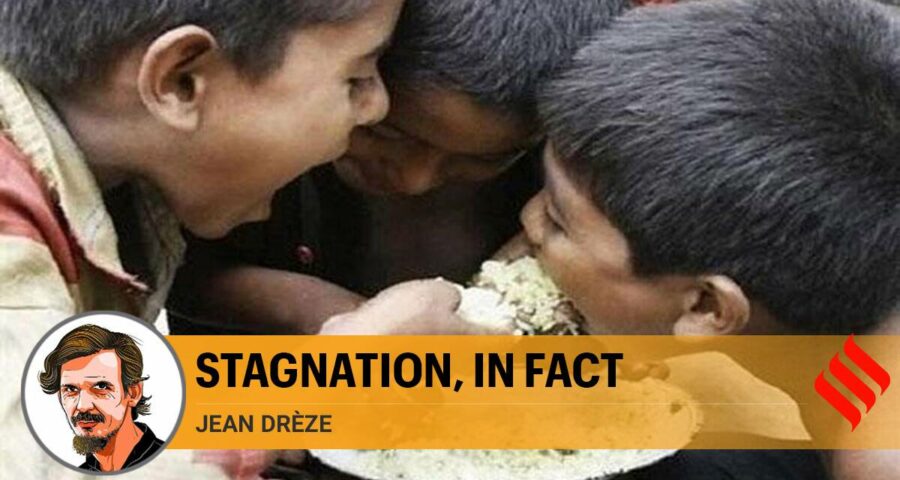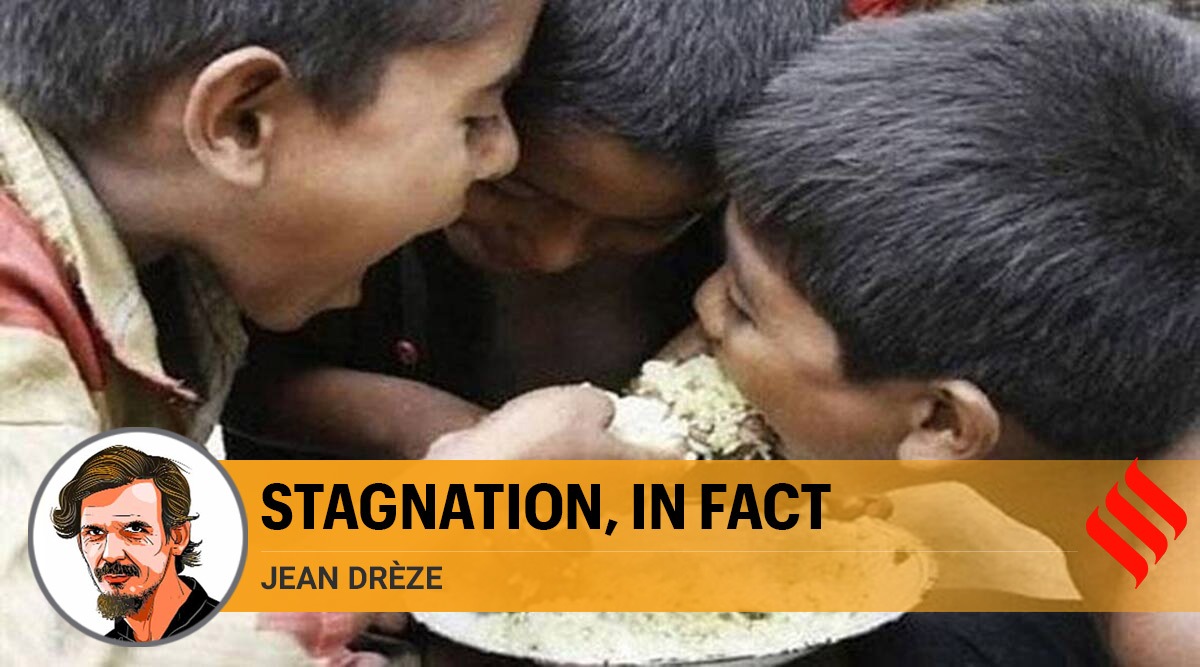Jean Dreze writes: Surjit Bhalla picks on data, but fails to debunk evidence of alarming trends in child nutrition.
I must thank Surjit Bhalla (‘Ideology trumps evidence’, IE December 26) for confirming the main point of an earlier article of mine (‘Give children weight’, IE December 17) — namely, that child undernutrition tends to be taken lightly in the corridors of power. His intention, of course, was the opposite — to debunk my article, along with a few others. But then, this is not Bhalla’s first self-goal.
For those who missed it, my article tried to draw attention to recent evidence, from the fifth National Family Health Survey (NFHS-5), of a stagnation in child nutrition indicators between 2015-16 and 2019-20. I also argued that these findings, along with related evidence of rising food insecurity in 2020, call for urgent intervention. Nothing in Bhalla’s rejoinder invalidates these concerns, and I also stand by all the facts mentioned in that article.
I share some of Bhalla’s reservations about the way NFHS-5 findings were reported in the media. But in his haste to knock down all suspects in one stroke, he gets entangled in a flawed attempt to dispute and downplay the evidence I had presented.
First, he picks on specific figures. That does not take him very far. His main quarrel is with a figure of 22 per cent for the proportion of underweight children in Bangladesh, quoted in my opening paragraph. Bhalla claims that I presented this as a 2015 figure and that the correct figure is 30.1 per cent. But the 22 per cent figure, like other World Bank figures quoted in that paragraph, actually applies to the latest year for which estimates are available — 2018 in the case of Bangladesh. It is correct.
Going beyond nitpicking, a fuller picture of child nutrition in India and Bangladesh is available from successive National Family Health Surveys (called Demographic and Health Surveys in Bangladesh). A sharp contrast emerges — steady decline of child undernutrition in Bangladesh, sluggish decline in India. This reinforces the point that India needs to pay more attention to child nutrition.
Second, Bhalla looks for a dog who did not bark. He points out that I did not mention wasting (weight-for-height) statistics and claims that this is a “revealing omission”. Sorry, case dismissed. I ignored wasting because it is a tricky indicator of child nutrition: It has the odd effect of classifying stunted children as well-nourished if they have adequate weight for their height. Wasting statistics often lead to counterintuitive conclusions, for example, that child undernutrition increased in India between 2005-6 and 2015-16 (despite improvements in age-specific heights and weights), or that children are better nourished in Odisha than Haryana. In earlier writings, I have rarely used wasting statistics, so there is nothing “revealing” in the said omission.
In any case, wasting statistics are consistent with the diagnosis of stagnating nutrition levels: Only three out of 10 major states for which NFHS-5 data have been released saw a decline in wasting between 2015-16 and 2019-20. Bringing wasting into the discussion is a waste of time.
Third, Bhalla suggests that there may be nothing unusual with a little “zig-zagging” of child nutrition estimates over time. According to him: “In 2000, the stunting average [for developing countries] excluding India was 29.3 per cent; in 2010 23.8 per cent; and in 2015, 28.7 per cent. In other words, a lot of zig-zag, reversals, and no net improvement over 20 years.” Let us overlook the fact that there are 15 years, not 20, between 2000 and 2015. These figures are puzzling, because stunting rates improved in most countries for which data are available during this period. How, then, did the “stunting average” go up between 2010 and 2015? Bhalla was kind enough to send me detailed clarifications. It turns out that the averages for different years pertain to different sets of countries (for example, 111 countries in 2010, 63 countries in 2015), so this is like comparing apples with mangoes.
The same paragraph continues: “In contrast, the stunting average in India was 46 per cent in 2000, 10 ppt lower in 2015, and still lower in 2019.” The last point is wishful thinking: There is no “stunting average” estimate for India in 2019. If available NFHS-5 data are representative of the entire country, then stunting levels were much the same in 2015 and 2019.
Finally, Bhalla points out that many social indicators other than child nutrition improved between 2015-16 and 2019-20, according to NFHS-5. That is true, but it does not make the stagnation of nutrition indicators any less alarming — that was the subject of my article, not sanitation or literacy. Social indicators tend to improve over time, it is not surprising that this happened again between 2015-16 and 2019-20. The fact that improvement is the norm makes it all the more important to be alert to patterns of stagnation or decline.
Child nutrition is fundamental to development and the quality of life. The fact that other indicators improve does not compensate for a failure to improve child nutrition. It does raise an interesting question: If many drivers of good nutrition (such as sanitation and antenatal care) improved between 2015-16 and 2019-20, how come child nutrition did not? One possible answer is that something went wrong with NFHS-5 data. Another is that the genius demonetisation gamble in 2016 (steadfastly supported by Bhalla) had dire and lasting consequences for the poor. Hopefully, a detailed analysis of the full NFHS-5 dataset will shed some light on these and other hypotheses in due course.
This article first appeared in the print edition on January 2, 2021 under the title ‘Stagnation, in fact’. The writer is visiting professor at the Department of Economics, Ranchi University.
Source: Read Full Article


